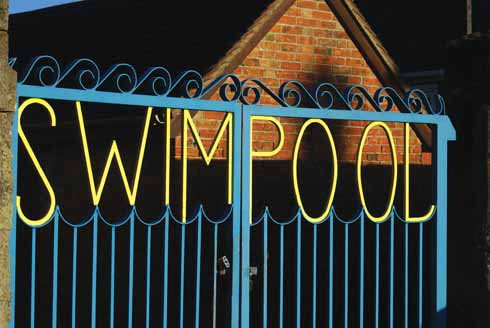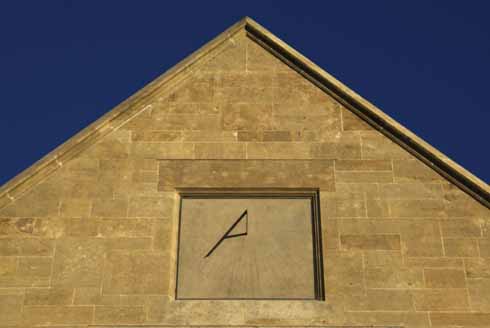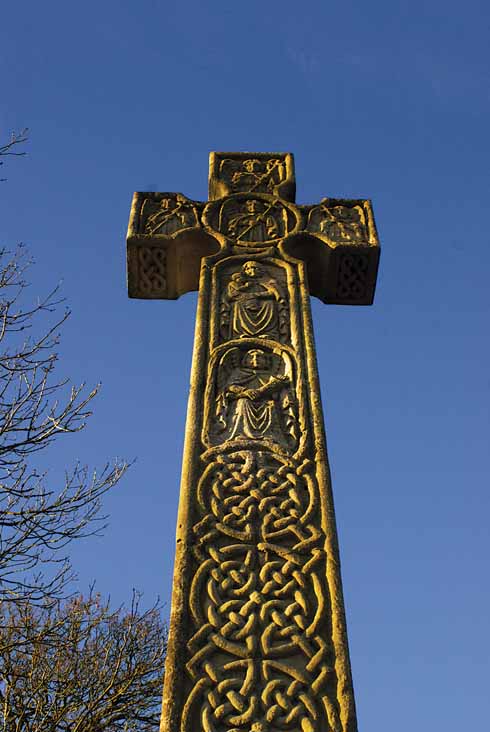Heavens above
Shaftesbury’s already a high place, but, as Michael Handy finds, it’s still worth looking up
Published in March ’17

Both in Castle Gardens and from Park Walk there are tremendous views to be seen from Shaftesbury. It’s worth visiting both depending on where the sun is shining to get the clearest vista.
The saying goes that Shaftesbury is an overcoat colder than Gillingham, owing to its exposed hilltop position. It is, therefore of course, the perfect place for an open air swimming pool. As the Shaftesbury Oasis doesn’t reopen until May this year, that doesn’t seem as crazy a prospect as it did when the picture of its front gates was captured in an early morning photo session started when the car’s digital thermometer showed -2°C. Not least as this is nearly 30°C colder than the water will be when the pool reopens.
The fact that Shaftesbury has a lido is a nice metaphor for a number of the curious details about this ancient and royal-favoured town: they are strange at first glance, but make more sense the more you think about them.
Another example of this might be the sundial high on the town’s main Post Office. Some might think it’s a bit odd not to have numbers on a sundial, or to put it as such a distance from the ground to render the lines too difficult to work out – or at least not to be easily calculable from the pavement – but this sundial, like Shaftesbury itself, makes you aware that time is passing, and indeed that it has passed, but not to get too worried about it. As one local put it: ‘It’s the only sundial that’s as accurate and useful at night as it is during the day.’
Shaftesbury is far from unique in having houses and buildings from many different eras butting up against one another, but in North Dorset terms at least and if one ignores any 20th-century and later development, it is much less clearly of one period than, say, Blandford (Georgian) or Gillingham (Victorian).
This throws up some interesting intersections in roof heights. Obviously the most familiar of these is Gold Hill, as its incline renders the meeting of one’s uphill neighbour’s ground floor with one’s own first floor. But the roofs themselves are subtly different, not least to one’s own manufactured memory of it.

Guttering (or perhaps more precisely gullying) between two mis-matched roof and draining systems on Salisbury Street
When asked what the predominant roofing material is on the houses on Gold Hill, without looking at a picture, most people will say ‘thatched’. In fact there is just one thatched building (with three residences in it) in the most commonly captured views. The rest are a mixture of tiled, or tile and slab roofs. Of course, where buildings with different roof styles meet, there has to be some way of connecting them so that the water from one roof doesn’t get in through the junction of itself with a higher building’s wall.

This small statue on the wall of St Peter’s Church at the top of Gold Hill is just one of the many statues, finials, grotesques and general bits of masonry interest to be seen while wandering around Shaftesbury
Probably the most interesting, and thus wonderfully Shaftesbury, ways of doing this is the junction between two buildings on Salisbury Street where a tall Georgian greenstone semi, rubs alongside an older cottage whose upper storey windows seem to be on the same level as the Georgian building’s ground floor ceiling position. There is, therefore, a disparity between the two roof heights, with the taller building’s roof overlapping the roof of the lower building, which does not butt into the taller building’s wall. Instead, an enormous piece of angle iron directs any water flow from the roof… onto the pedestrians below.

One would do well to forget the overhang when making use of this cantilevered section of top storey accommodation in what was the Old Granary. As this section used to house a hoist for hauling up sacks of grain from the ground below, it will in fact be incredibly well supported.
As towns evolve and grow, often their buildings will get repurposed. In particular, the manufactories of industries that no longer exist are now, more often than not, converted into flats or whole residences. Where the conversions have been done sympathetically, this can leave some fascinating features showing glimpses of the building’s former uses. Sometimes, of course, they don’t, because one’s attention is drawn elsewhere. How hard it is to concentrate on a huge first-floor semicircular picture window when there’s an incredibly shiny suit of armour in it.
Likewise it is incredibly difficult to concentrate on the carved stone Saxon cross in front of, and the faces of the winds atop, one of the former Abbey’s buildings, when one is faced by one of the best panoramic views in Dorset.

This rooftop finial is one of a number to be found in Shaftesbury. This one sits atop a building at the old Abbey.
But whether one looks up, or down, or out of town or inwards towards its centre, there really is something to interest anyone who is prepared to stop and stare, even if only for a moment.





